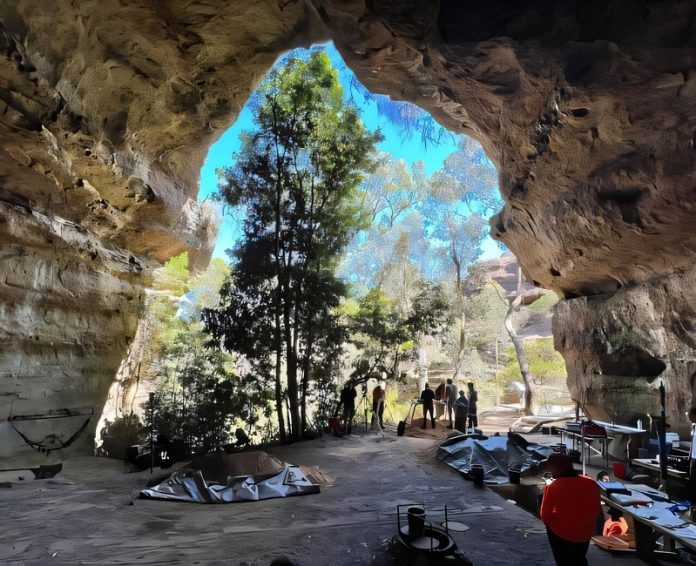
A remarkable archaeological discovery in the Blue Mountains has revealed that people lived in this cold, high-altitude region during the last ice age—much earlier than previously believed.
Researchers from the Australian Museum, the University of Sydney, and the Australian National University (ANU), working in partnership with First Nations community members, uncovered nearly 700 stone tools in a cave known as Dargan Shelter.
The site sits at an elevation of 1,073 metres and dates back around 20,000 years.
This discovery marks Dargan Shelter as the oldest known high-altitude human occupation site in Australia.
During the last ice age, the landscape here was treeless, harsh, and often frozen. Until now, scientists assumed that such difficult conditions made it uninhabitable.
But the artifacts and features found in the cave prove that people returned to this shelter repeatedly over thousands of years.
Wayne Brennan, a Gomeroi knowledge holder and mentor in archaeology at the University of Sydney, first suggested investigating the site.
He brought together scientists and local First Nations communities—including members of the Dharug, Wiradjuri, Dharawal, Gomeroi, Wonnarua, and Ngunnawal peoples—to explore the region’s deep cultural history and advocate for better protection of its heritage.
Dr. Amy Mosig Way, an archaeologist with joint positions at the Australian Museum and the University of Sydney, led the research alongside Associate Professor Duncan Wright from ANU.
She explained that the find shows how Australia fits into a growing global pattern: early humans were more adaptable to cold environments than previously assumed. High, icy landscapes weren’t necessarily barriers—they were part of people’s homes.
Professor Philip Piper from ANU said the site’s excellent preservation allowed the team to build a strong timeline of human activity stretching back over 20,000 years.
Among the findings were hearth features and layered deposits that captured thousands of years of occupation.
PhD student Emily Nutman added that chemical analysis of the stone tools shows people were travelling across vast distances—from the Hunter Valley and Jenolan Caves area—to reach the site during the ice age.
This suggests that even in cold and difficult times, communities moved long distances and stayed connected.
Local Dharug women and co-authors of the study, Leanne Watson Redpath and Erin Wilkins, emphasized that their people have always known about the cave.
It’s more than just a shelter—it’s part of their identity and history, used for storytelling, gathering, and survival.
They stressed the importance of protecting cultural sites like Dargan Shelter, which are currently not protected under the same laws that safeguard the region’s plants and animals.
The cave’s exact location will remain secret to preserve its cultural importance.
This study, continuing work that began in the 1930s, adds a vital chapter to Australia’s history and highlights the long-standing connection between First Nations peoples and the challenging high country of the Blue Mountains.
Source: Australian National University.



